World View: Letter from South Africa
The World View series shines light on the creativity and resilience of designers around the world as they confront the challenges wrought by the Covid-19 pandemic. Working with our international contributors, we reach out to creative talents to ponder the power of design in difficult times and share messages of hope. As South Africa emerges from one of the world’s strictest lockdowns, designers and artists are scrambling to revive small businesses and channelling their creative energies to analogue production, reports Sean O’Toole from Cape Town.
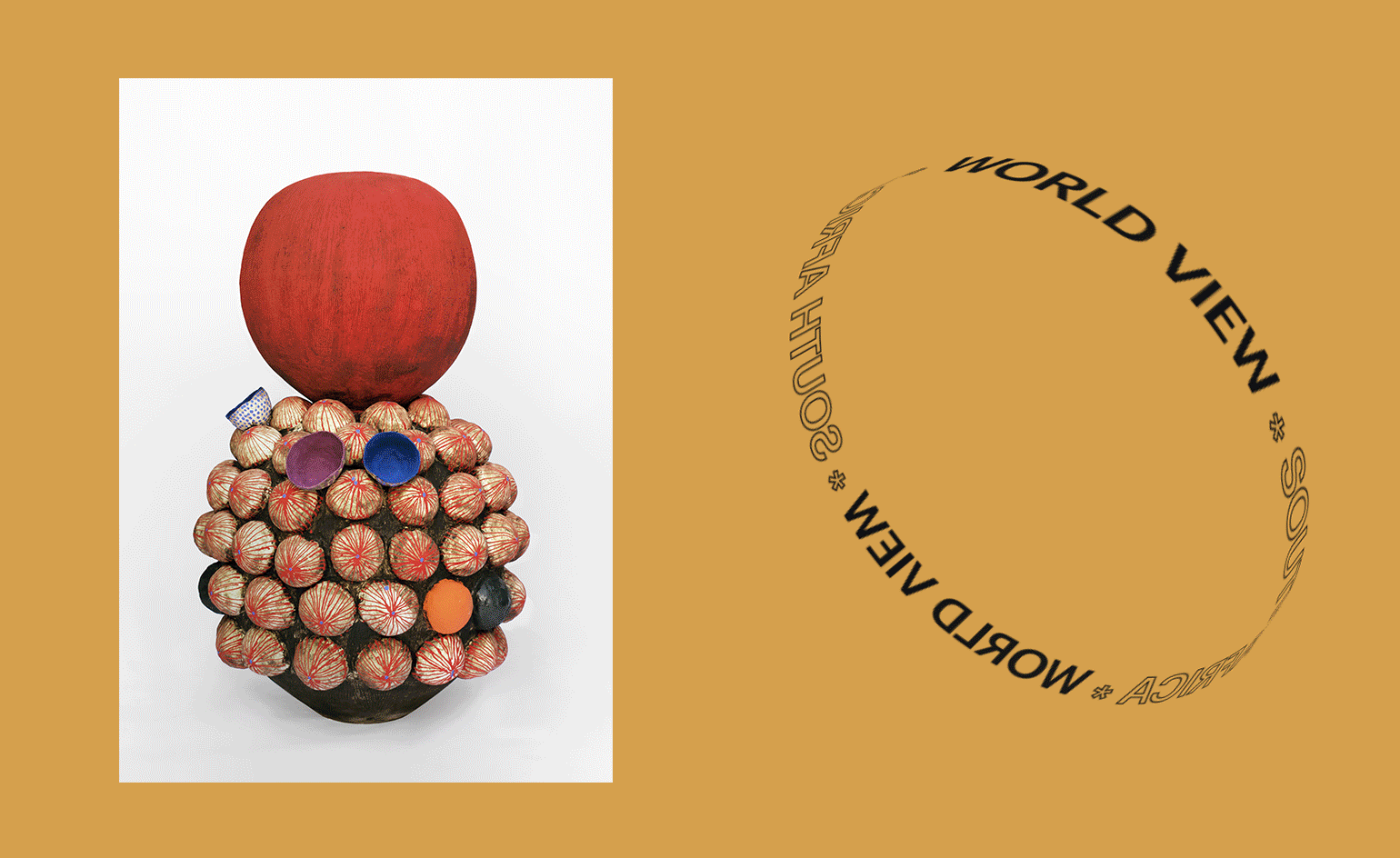
The statistical way in which livelihoods in faraway places are dispatched in daily pandemic updates would suggest that South Africa, which has registered roughly 230 deaths and 12,500 infections at time of publication, has been spared the worst. True, quick action by the national government has saved lives. But the current lockdown, one of the world’s strictest, has severely impacted the country’s creative community. The 1 May easing of a five-week ban on movement has not brought relief to designers and artists, who remain barred from accessing studios away from home.
The rapidity of the 26 March lockdown blindsided many, including Cape Town ceramicist Zizipho Poswa. ‘I didn’t get a chance to set up a studio at home,’ says Poswa, who in 2006 founded Imiso Ceramics with Andile Dyalvane. The pair recently took occupation of a new studio located a short distance from their retail store in boho Woodstock. With both spaces currently shuttered until the lockdown lifts, Poswa has been exploring the feasibility of e-commerce and online workshops, as well as continued doodling on her phone (a preferred way of sketching). She is not panicked.
‘I needed this, I’ve had not had a break in two years,’ says Poswa, a former hair model whose vessels channel her interest in female adornment and labour. This year, in between her daily duties at Imiso, Poswa showed three new pieces from her Umthwalo series, inspired by the labours of rural women, at Southern Guild gallery in Cape Town, and was the central pillar of a March group show in nearby Stellenbosch.

'Nozibhedlele' by Zizipho Poswa, featuring bulbous protrusions and delicate line work, will appear in a forthcoming exhibition of ceramics at SMAC Gallery, Stellenbosch, which has a virtual opening scheduled for 23 May.courtesy Southern Guild'
Lockdown has pushed back a planned June residency at the Center for Contemporary Ceramics at California State University, Long Beach, where she would have worked on her largest pieces to date. ‘I’m limited by the size of our kiln,’ says Poswa, whose work will appear in a forthcoming exhibition of ceramics at SMAC Gallery, Stellenbosch. With galleries and museums shuttered for the foreseeable future, the virtual opening is scheduled for 23 May. The artist list includes Ben Orkin, an exciting new talent recently signed to Cape Town’s Whatiftheworld Gallery, and Belinda Blignaut, whose experimental practice in the 1990s informs her current work with clay.
Over the last decade, Blignaut has produced vessels made with clay foraged from farms in the Cape region. Often roughly textured and eccentric in form, each of her vessels is an archive of place. ‘I am absolutely in awe of how the earth was formed,’ says Blignaut. During lockdown she has resorted to digging for clay on her property, which is adjacent a forest in Somerset West, outside Cape Town. ‘That has been my sanity,’ she says. ‘It is so peaceful.’ Blignaut is also working towards a European survey of her singular and underappreciated practice.
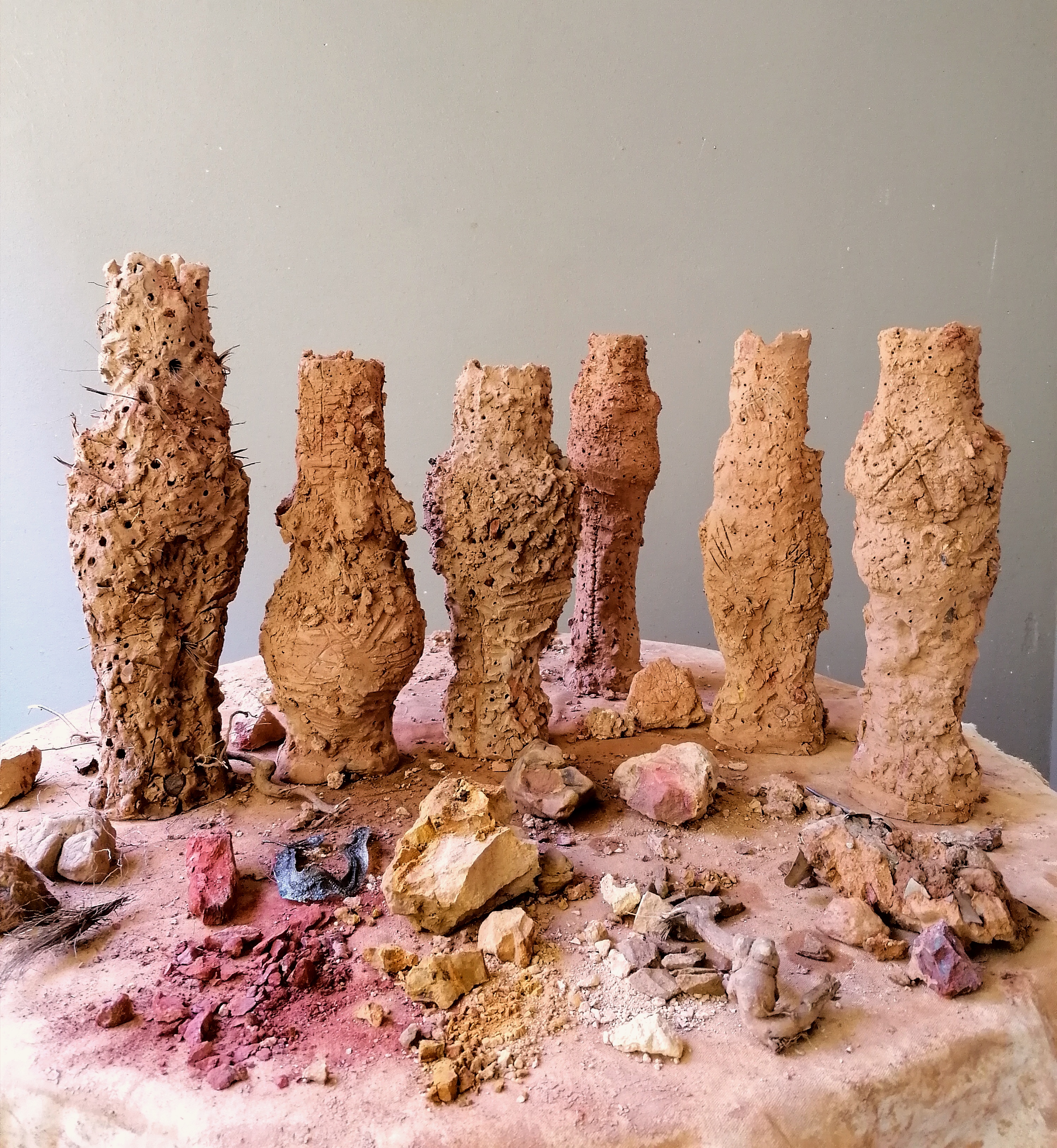
Work in progress from Belinda Blignaut’s Growing vessel series, created from foraged clay in her balcony studio. It expresses ‘a strange mixture of gratitude to be able to work, a growing sadness for all those without work or food right now, and the ever-growing love for the earth’, says the artist
While social media can sometimes feel like the native habitat of the four horsemen of the apocalypse, it has offered a valuable window onto socially-distant creativity. Like Poswa and Blignaut, artist Athi-Patra Ruga is an Instagrammer. Cape Town-based Ruga is currently holed up with his partner, journalist Malibongwe Tyilo, in the mountain village of Hogsback in the Eastern Cape, where they own a house. Ruga is using lockdown to paint on canvas board, a new departure for him, as well as finish up tapestries for his solo exhibition at Whatiftheworld gallery.
One tapestry from the artist’s postponed exhibition depicts a character from AC Jordan’s Xhosa-language novel, The Wrath of the Ancestors, published in 1940 by Lovedale Press. This storied publishing house, founded by missionaries in 1823, is located in Alice, near Ruga’s bolthole. ‘I first read Lovedale books at school,’ says Ruga. He has also been visiting Lovedale’s print studio.
Receive our daily digest of inspiration, escapism and design stories from around the world direct to your inbox.
In April he posted an emotional plea on behalf of the employee-owned enterprise, which has struggled to capitalise on its pioneering work publishing formative black intellectuals. ‘The situation is bleak – they don’t even have electricity or water,’ he says. ‘We have started a GoFundMe campaign for the three remaining staff of the 18 who bought the company in 2001. They have worked there for five decades.’

’uNobantu noMajola’, a wool tapestry by Athi-Patra Ruga inspired by a character in the AC Jordan novel The Wrath of the Ancestors, published in 1940 by Lovedale Press. Presented as part of the exhibition ’Interior/Exterior’, with Cape Town’s Whatiftheworld gallery
While Lovedale teeters on the brink, in May two magazine publishers have folded in quick succession. Tiaan Nagel, who formerly edited now-defunct House & Leisure magazine before returning to fashion design and retail last year, enjoyed brisk trade at his eponymous Johannesburg store. Not only is the store temporarily closed during lockdown, orders for made-to-measure garments have been cancelled and interior-design projects placed on hold.
He is nonetheless developing a future range in collaboration with Cape Town painter Zander Blom, ‘something a little more chaotic, something that seems collaged together, random bits of fabrics, silhouettes “stitched” together to create something new and removed from trend’. Using online tools to make what used to be haptic and artisanal decisions is, he says, ‘extremely difficult’.

Tiaan Nagel’s concept drawings for a future line, date unspecified, with fabric swatches and a catalogue from his collaborator, artist Zander Blom. The collection draws inspiration from the colours and shapes of Blom’s painting, Desert Moon, 2019
In mid-March, young sculptor and muralist David Brits received good news: his collaborative proposal, developed with Raiven Hansmann, to host a choir parade in the rural town of Graaff-Reinet received a thumbs up from the judges of the inaugural Social Impact Arts Prize. Drawing on the region’s choral traditions, Tears Become Rain, as the project is known, will see various local choirs assemble at a local square in a gathering of song. ‘The project attempts to answer one of the great questions of our age: how to use culture as a way to bring cohesion in a society like ours, which is very disparate,’ he said at the award ceremony.
But then lockdown happened. Overnight, the artist’s mural business, which pays his bills, collapsed. He has had to move home with his mother. ‘I’ve done none of the linocuts, carbon-fibre sculptures or drawings I grandly envisioned myself creating when I packed my car and locked my studio over a month ago,’ he says. ‘All of my art equipment is still in boxes.’ Like Blignaut, he has found consolation in Cape Town’s often-parched earth, producing dry-pack stone earthworks in the firebreak at the back of his mother’s house. ‘The act of building dry-pack stone rock walls is about as old as architecture itself. For me, this is a heavy brand of physically-embodied emotional release.’

Artist David Brits and musician Raiven Hansmann, pictured at Stellenbosch's Rupert Museum in March presenting Tears Become Rain, their winning proposal for the inaugural Social Impact Arts Prize
Read more from Wallpaper* World View
Letter from Milan
Letter from Spain
Letter from Middle East
Letter from Japan
Letter from Hong Kong
Letter from Canada
INFORMATION
@zizipo_poswa, imisoceramics.co.za
@belinda_blignaut, belinda.co.za
@athipatra, whatiftheworld.com/artist/athi-patra-ruga
@tiaannagel, tiaannagel.co.za
@davidbrits_, davidbrits.com
Sean O’Toole is writer, editor and curator based in Cape Town. He has published two books, most recently a 2021 monograph on the expressionist painter Irma Stern, as well as edited three volumes of cultural essays, including 'The Journey: New Positions on African Photography', which received a New York Times critics’ pick for Best Art Books 2021. His exhibition projects include 'Photo book! Photo-book! Photobook!' at A4 Arts Foundation, Cape Town.
-
 ‘I want to bring anxiety to the surface': Shannon Cartier Lucy on her unsettling works
‘I want to bring anxiety to the surface': Shannon Cartier Lucy on her unsettling worksIn an exhibition at Soft Opening, London, Shannon Cartier Lucy revisits childhood memories
-
 What one writer learnt in 2025 through exploring the ‘intimate, familiar’ wardrobes of ten friends
What one writer learnt in 2025 through exploring the ‘intimate, familiar’ wardrobes of ten friendsInspired by artist Sophie Calle, Colleen Kelsey’s ‘Wearing It Out’ sees the writer ask ten friends to tell the stories behind their most precious garments – from a wedding dress ordered on a whim to a pair of Prada Mary Janes
-
 Year in review: 2025’s top ten cars chosen by transport editor Jonathan Bell
Year in review: 2025’s top ten cars chosen by transport editor Jonathan BellWhat were our chosen conveyances in 2025? These ten cars impressed, either through their look and feel, style, sophistication or all-round practicality
-
 AHEC presents the future of South African Design
AHEC presents the future of South African DesignFuture Heirlooms is a project by AHEC, presented at Always Welcome in Johannesburg (until 30 October 2022) in collaboration with seven South African design studios working in American red oak
-
 World View: Letter from The Netherlands
World View: Letter from The NetherlandsOur World View series shines light on the creativity and resilience of designers around the world as they confront the challenges wrought by the Covid-19 pandemic. Working with our international contributors, we reach out to creative talents to ponder the power of design in difficult times and share messages of hope. Dutch designers have taken the opportunity to reset and move towards a more sustainable future, writes Yoko Choy from Amsterdam.
-
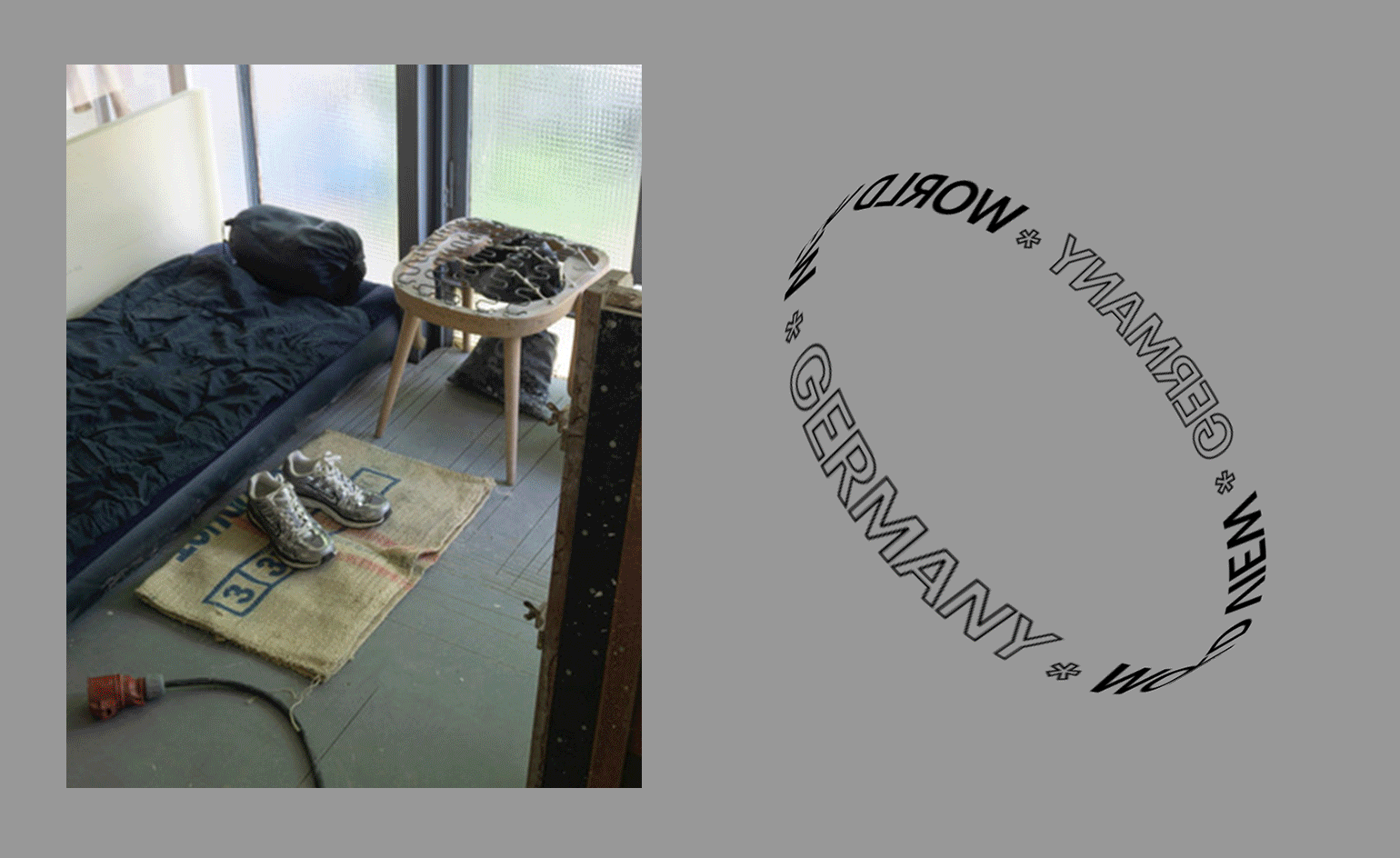 World View: Letter from Germany
World View: Letter from GermanyOur World View series shines light on the creativity and resilience of designers around the world as they confront the challenges wrought by the Covid-19 pandemic. Working with our international contributors, we reach out to creative talents to ponder the power of design in difficult times and share messages of hope. In Berlin, designers have embraced the slower pace of life and developed a stronger appreciation for community and environment, writes Emily McDermott MORE FROM WALLPAPER* WORLD VIEW
-
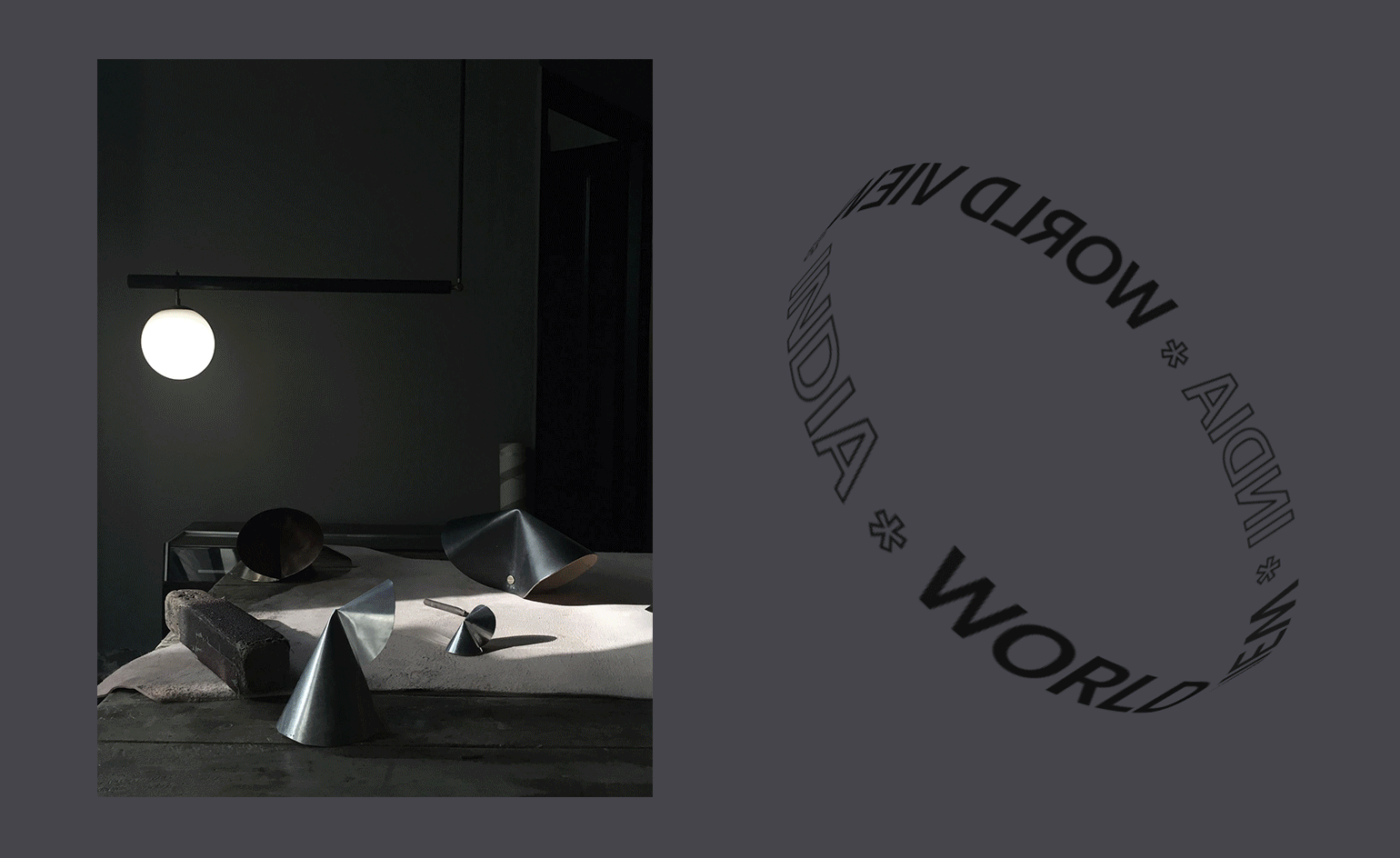 World View: Letter from India
World View: Letter from IndiaOur new series shines light on the creativity and resilience of designers around the world as they confront the challenges wrought by the Covid-19 pandemic. Working with our international contributors, we reach out to creative talents to ponder the power of design in difficult times and share messages of hope. In Mumbai, Bangalore and New Delhi, studios and designers have been connecting with team members through craft, while stepping back to appreciate local sources, writes our design editor, digital, Sujata Burman
-
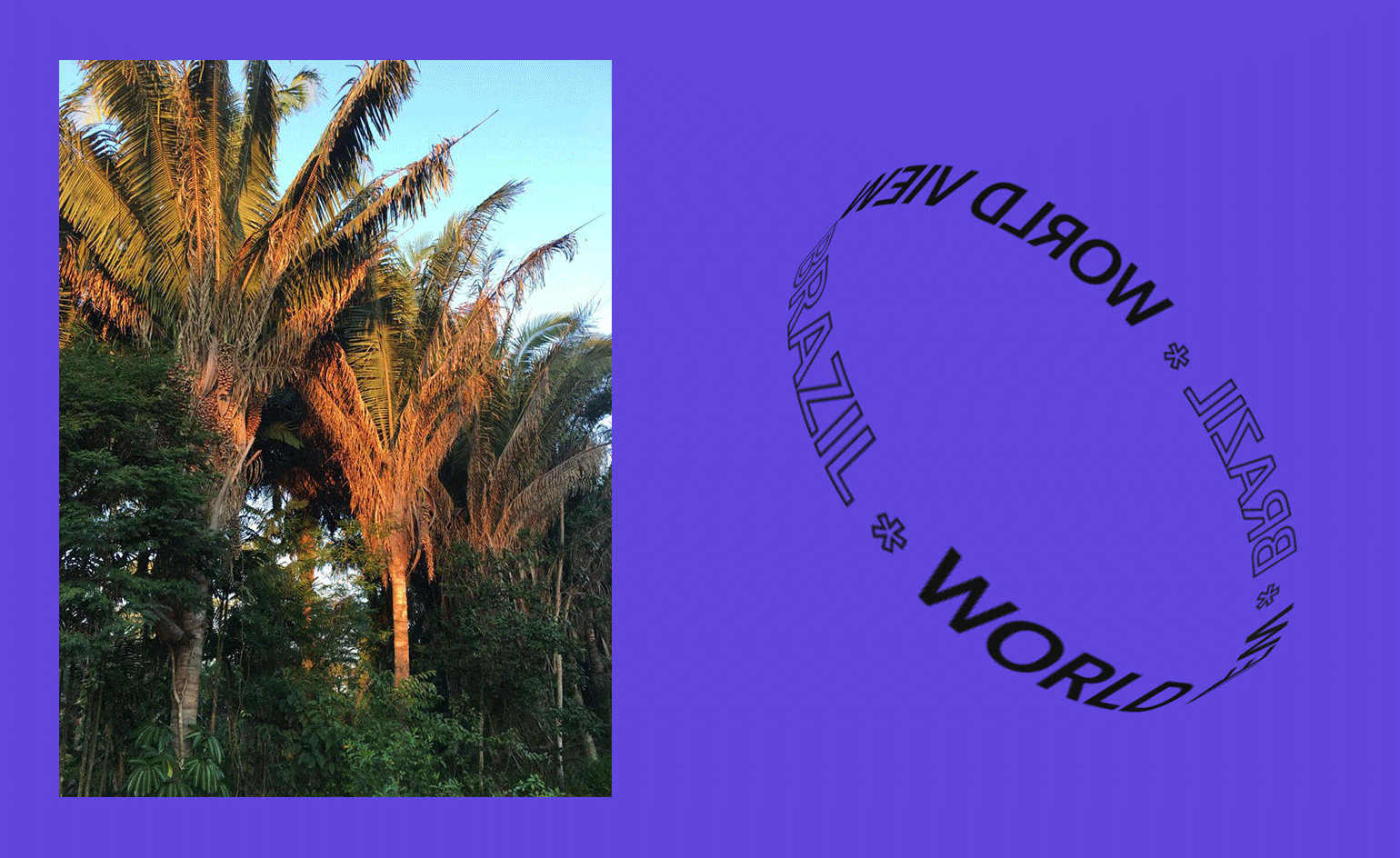 World View: Letter from Brazil
World View: Letter from BrazilThe World View series shines light on the creativity and resilience of designers around the world as they confront the challenges wrought by the Covid-19 pandemic. Working with our international contributors, we reach out to creative talents to ponder the power of design in difficult times and share messages of hope. Brazilian designers have been characteristically composed, and coming together in the face of the country’s mounting crisis, reports Scott Mitchem
-
 World View: Letter from Denmark
World View: Letter from DenmarkThe World View series shines light on the creativity and resilience of designers around the world as they confront the challenges wrought by the Covid-19 pandemic. Working with our international contributors, we reach out to creative talents to ponder the power of design in difficult times and share messages of hope. Among designers in Denmark, there has been some disorientation, but also patience, resilience, and a newfound sense of purpose and generosity, writes our commissioning editor TF Chan.
-
 World View: Letter from Mexico
World View: Letter from MexicoThe World View series shines light on the creativity and resilience of designers around the world as they confront the challenges wrought by the Covid-19 pandemic. Working with our international contributors, we reach out to creative talents to ponder the power of design in difficult times and share messages of hope. Reporting from Mexico, writers James Burke and Molly Mandell examine the ways in which designers are supporting local makers and elevating traditional craft, avoiding distractions and focusing on the things that matter most.
-
 World View: Letter from the Middle East
World View: Letter from the Middle EastThe World View series shines light on the creativity and resilience of designers around the world as they confront the challenges wrought by the Covid-19 pandemic. Working with our international contributors, we reach out to creative talents to ponder the power of design in difficult times and share messages of hope. Designers in Lebanon, Jordan, the UAE and Bahrain are experimenting, reflecting, connecting with local makers, and exploring projects with social impact, reports Rebecca Anne Proctor from Dubai.